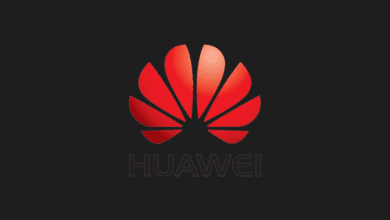
Metaverse: Unlocking a Multi-Trillion Dollar Market
Financial institutions like JP Morgan, Goldman Sachs, and Morgan Stanley are foreseeing that metaverse technologies will unlock trillions of dollars in revenue opportunities for businesses in the coming period. From retail to entertainment, telecommunications to finance, various industries are contemplating metaverse strategies.
JP Morgan, as the first financial institution to enter the metaverse recently, predicts that metaverse technologies will present a $1 trillion revenue opportunity for the financial sector. On the other hand, Goldman Sachs anticipates that as digital experiences transition into the metaverse universe, an $8 trillion market may emerge, constituting around 20 to 25 percent of the global economy’s digital economy.
Goldman Sachs clarifies that the $8 trillion is an average across various scenarios ranging from $2 trillion to $12 trillion. Morgan Stanley, another US investment bank, predicts that the metaverse market will reach $8 trillion in China alone, excluding revenues from NFTs and virtual concerts. The bank suggests that the actual figure might be even higher.
Boards began to ask: What is my metaverse strategy?

JP Morgan analysts emphasize that the metaverse world is not meant to replace today’s human interactions but offers numerous opportunities for both consumers and brands. They estimate that the metaverse presents an opportunity likely to permeate every sector in the coming years, creating an annual revenue of around $1 trillion.
In their report titled “What about my metaverse strategy? What should we do? What is this metaverse?” the analysts anticipate questions surrounding the adoption of metaverse strategies and believe that this technology, still in its early stages, will fundamentally transform how products, services, and experiences are accessed.
Workers working remotely in digital factories…

Highlighting the extensive opportunities presented by metaverse technologies, JP Morgan emphasizes their impact not only in the B2C (business-to-consumer) sector but also in the B2B (business-to-business) arena.
The bank envisions reduced costs for product testing in the metaverse, suggesting, for instance, the ability to create a digital twin of a factory to evaluate how robotic systems interact with the physical environment. Furthermore, JP Morgan sees metaverse marketplaces providing access to consumers in developing economies and facilitating a transformation in human capital.
The bank notes that employees in low-income countries could work for western companies without the need for physical migration. As the metaverse economy evolves, JP Morgan anticipates the creation of new jobs both online and offline, with various industries, from clothing to technology, starting to recruit based on metaverse expertise.
Additionally, the bank predicts that some individuals will become “gig” economy workers earning income within the metaverse world. The report underscores the diverse and transformative impacts metaverse technologies can have across different sectors and aspects of human capital.
Metaverse land prices doubled in 6 months!

JP Morgan highlights the significant increase in land parcel prices in metaverse universes, noting that prices doubled in just six months in 2021.
The bank provides specific data, stating, “The land parcel price, which was $6,000 in June in the four largest Web 3.0 metaverses, increased to $12,000 as of December.” The report emphasizes the substantial value appreciation within this short period.
To illustrate the extent of this trend, JP Morgan mentions a specific sale in Decentraland where a piece of land was sold for $913,000 in June 2021.
The bank further notes that real estate companies, such as Every Realm, are making plans to develop metaverse spaces, transforming them into extensive shopping complexes. This data underscores the growing economic significance and investment potential within the metaverse real estate market.
Retail, real estate, entertainment and auditing are also in the metaverse universe.

In recent months, a multitude of companies spanning various sectors, including retail, audit, telecommunications, real estate, and entertainment, have entered the metaverse.
Renowned brands such as Nike, Walmart, Amazon, Verizon, PWC, Adidas, Atari, Disney, and Warner Music are among those making strides in this emerging space.
Warner Music, for instance, is actively developing a concert-focused theme park within the Sandbox metaverse platform.
Meanwhile, luxury clothing brand Gucci is poised to acquire land in Sandbox, aiming to provide its customers with immersive digital experiences in the metaverse universe.
Notably, artists like Ariana Grande and Lady Gaga have held concerts on the Fortnite platform through collaborations with Epic Games. This surge of interest and engagement from diverse industries underscores the metaverse’s growing influence and appeal.
China establishes Metaverse Industry Committee

Governments are actively engaged in shaping legislation and evaluating the impact of metaverse development on sustainable growth.
In this regard, China took a significant step by establishing the Metaverse Industry Committee last week, with 17 companies becoming members of the committee.
The stated goal of this committee, along with its member companies, is to ensure the “healthy, orderly, and sustainable development of metaverse technology.” This reflects a commitment to prevent the metaverse from becoming disconnected from the real world and its economy.
Metaverse is looking for designers and architects!

The demand for professionals in metaverse development extends beyond software developers, including the need for 3D modelers, graphic designers, interior designers, and architects. Unlike the real world, architects in the metaverse don’t have to consider durability and weather-related material sensitivity.
Instead, the key competency sought in architects for the metaverse is the ability to imagine unprecedented structures, cities, and landscapes.
This workforce is crucial for designing every piece of land and headquarters in the metaverse, allowing them to be used with customized designs. In a world where everyone uses a self-reflecting avatar, 3D modelers are also among the most sought-after professions.
There is not a single metaverse!

Meta, the parent company of Facebook, was the first major tech giant to announce its entry into the Metaverse. However, there isn’t a single operational metaverse where both individuals and companies are actively participating at the moment.
Decentraland, founded in 2015 by two Argentine entrepreneurs, is an open-source 3D virtual world platform. The platform’s native cryptocurrency is MANA, and it operates on the Ethereum blockchain. Sandbox, acquired by Hong Kong-based Animoca Brands in 2018, uses the digital currency SAND.
The platform collaborates with various industries, including entertainment, finance, gaming, real estate, and cinema.
Somnium Space, another metaverse platform, focuses more on the augmented reality experience, and its currency is a token called CUBE. The platform periodically releases new parcels of land for sale within its map of 5,000 parcels and the universe.
You may also like this content
Follow us on TWITTER (X) and be instantly informed about the latest developments…












